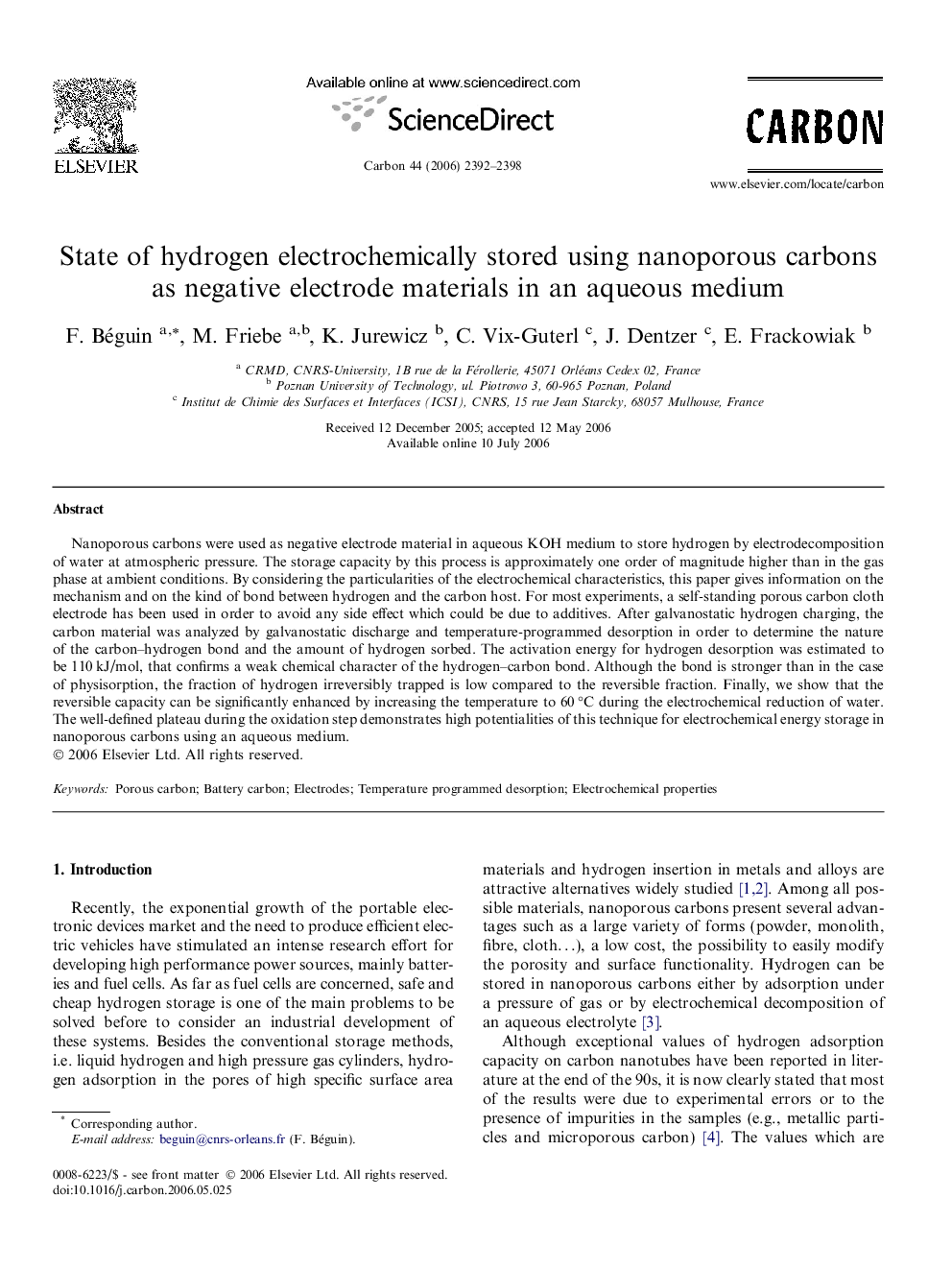| Article ID | Journal | Published Year | Pages | File Type |
|---|---|---|---|---|
| 1417809 | Carbon | 2006 | 7 Pages |
Nanoporous carbons were used as negative electrode material in aqueous KOH medium to store hydrogen by electrodecomposition of water at atmospheric pressure. The storage capacity by this process is approximately one order of magnitude higher than in the gas phase at ambient conditions. By considering the particularities of the electrochemical characteristics, this paper gives information on the mechanism and on the kind of bond between hydrogen and the carbon host. For most experiments, a self-standing porous carbon cloth electrode has been used in order to avoid any side effect which could be due to additives. After galvanostatic hydrogen charging, the carbon material was analyzed by galvanostatic discharge and temperature-programmed desorption in order to determine the nature of the carbon–hydrogen bond and the amount of hydrogen sorbed. The activation energy for hydrogen desorption was estimated to be 110 kJ/mol, that confirms a weak chemical character of the hydrogen–carbon bond. Although the bond is stronger than in the case of physisorption, the fraction of hydrogen irreversibly trapped is low compared to the reversible fraction. Finally, we show that the reversible capacity can be significantly enhanced by increasing the temperature to 60 °C during the electrochemical reduction of water. The well-defined plateau during the oxidation step demonstrates high potentialities of this technique for electrochemical energy storage in nanoporous carbons using an aqueous medium.
